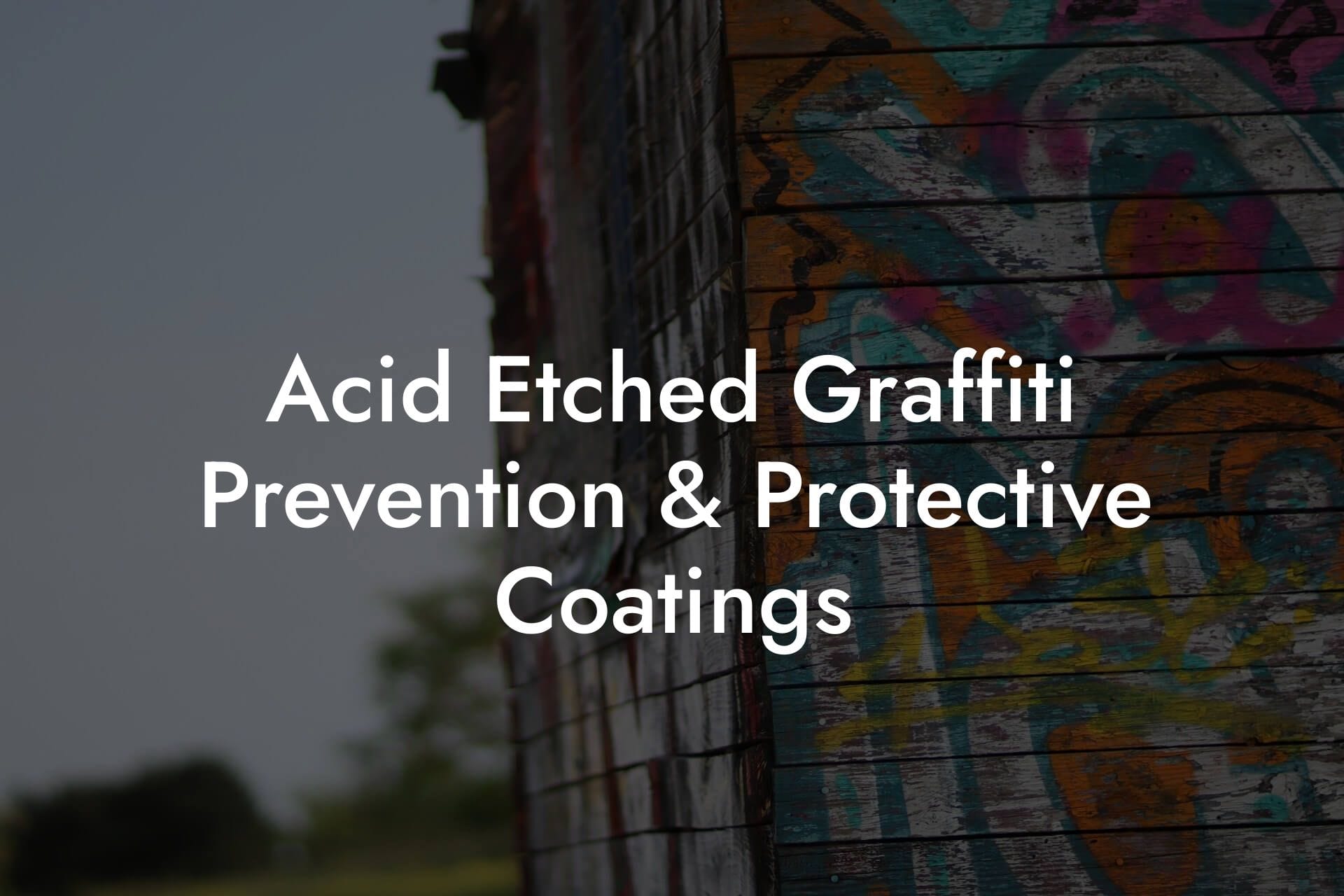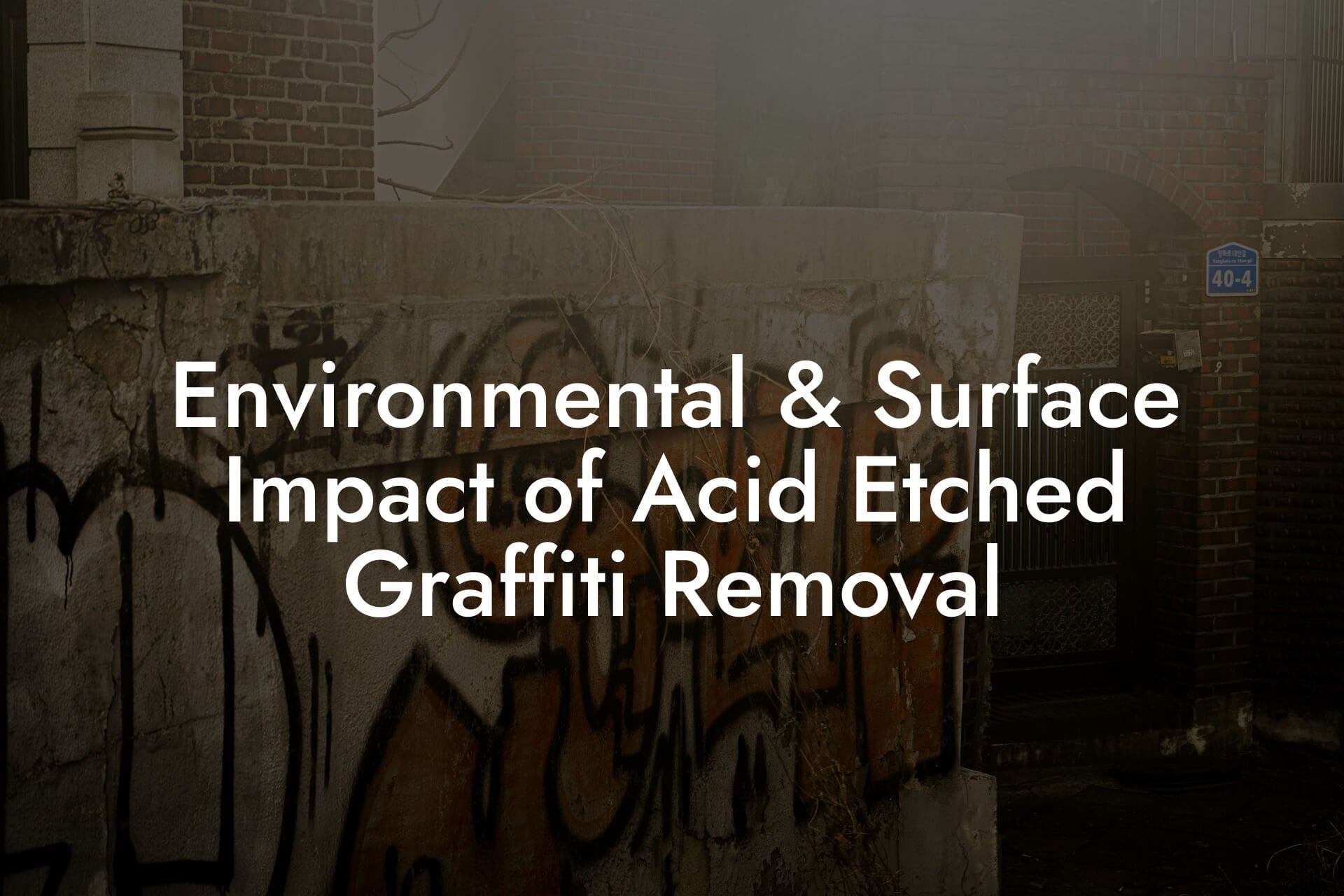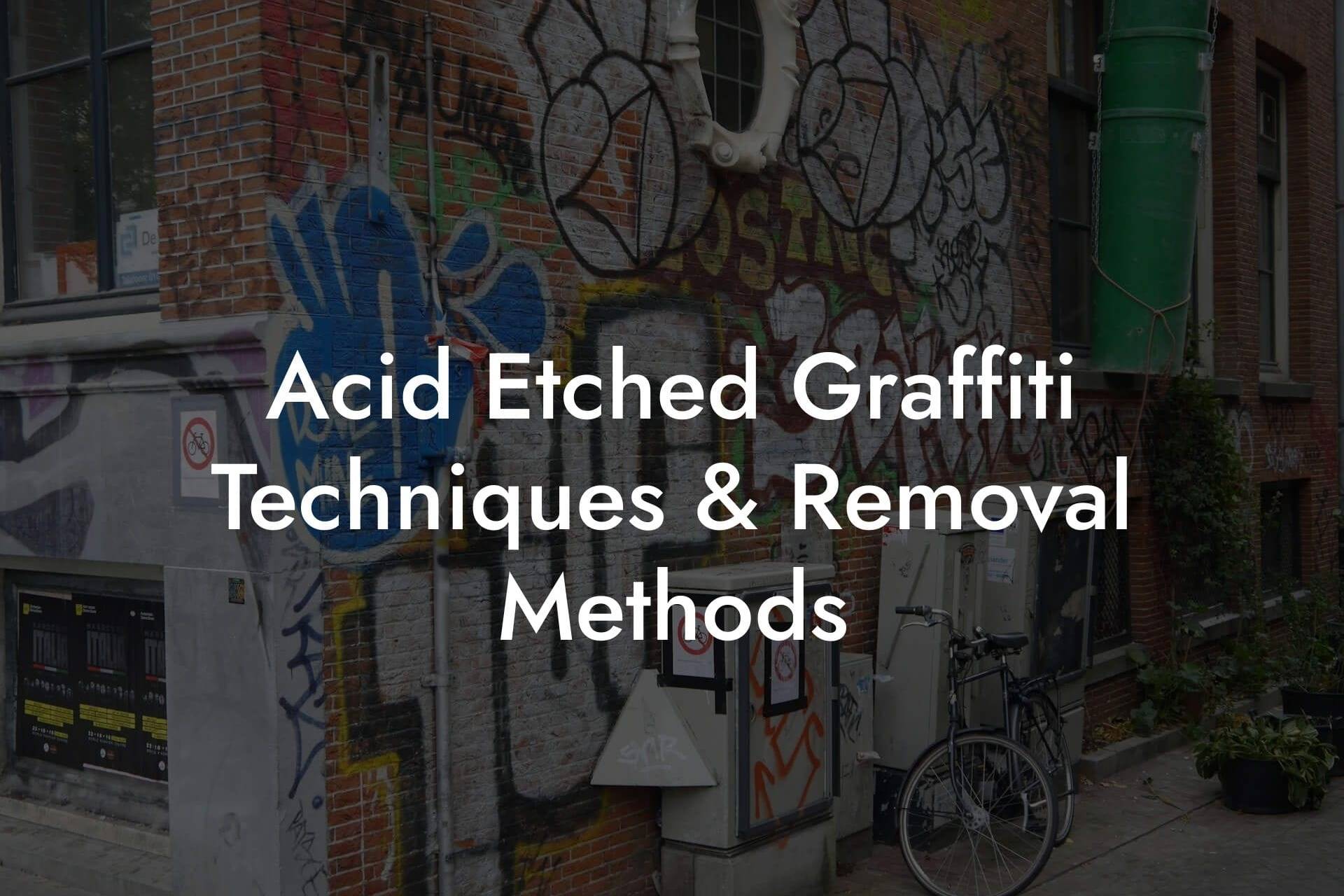Deciding whether to tackle acid‑etched graffiti yourself or hire a professional service is one of the most common dilemmas for property owners. Acid‑etched marks are chemically bonded into substrates, stone, concrete, brick, metal, glass or ceramic, making them far harder to remove than paint or ink. A well‑executed DIY attempt can quickly become a costly mistake, while professional intervention carries higher upfront fees. This guide compares both approaches in depth: safety considerations, tools and materials, step‑by‑step workflows, likely results, hidden costs, long‑term maintenance, case studies and decision criteria to help you choose the right path.
Table of Contents
- Why Acid‑Etched Graffiti Is Different
- Safety Equipment and Preparation
- Tool Rental & Material Costs
- Step‑by‑Step DIY Workflow
- Common DIY Pitfalls
- Specialist Assessment
- Advanced Equipment & Techniques
- Safety & Compliance
- Guaranteed Outcomes
- Typical Professional Workflow
- Small‑Scale DIY Success (and Regret)
- Professional Restoration on Heritage Stone
- Key Factors to Consider
- DIY Approach
- Professional Approach
- Side‑by‑Side Comparison
- Case Studies
- Decision Guide
- Frequently Asked Questions
Why Acid‑Etched Graffiti Is Different
When acid contacts a substrate, it reacts with mineral or metallic compounds to dissolve or oxidize the surface layer. Unlike surface graffiti, which sits atop material and can be wiped or pressure‑washed away, etched graffiti removes a thin layer of the substrate itself. Depths range from fractions of a millimeter to several millimeters, depending on acid concentration and dwell time. Without fully removing or neutralizing that altered layer, any cover‑up or seal will simply reveal the ghost of the etch over time.
Key Factors to Consider
- Etch Depth – Shallow (<0.5 mm) vs. deep (>1 mm) determines method complexity.
- Substrate Type – Porous natural stone requires gentler, more nuanced treatment than polished granite or glass.
- Area Size – Small, isolated tags differ from widespread acid damage across façades or floors.
- Safety & Liability – Handling acids and abrasives without training is risky.
- Cost & Time – DIY may save labor but often incurs hidden tool rental, waste disposal and redo expenses.
- Quality & Warranty – Professionals offer guarantees and follow‑up, DIY does not.
DIY Approach
Safety Equipment and Preparation
Even a “simple” neutralization requires robust safety measures:
- Chemical‑resistant gloves (nitrile + neoprene double layer)
- Acid‑resistant coveralls and apron
- Full‑face shield and chemical‑sealed goggles
- Respirator with acid‑gas cartridges (A2) and P3 particulate filters
- Spill kits, containment drapes and waste containers
Without professional-grade PPE and containment, DIYers risk chemical burns, respiratory injury and environmental contamination.
Tool Rental & Material Costs
- Micro‑sandblasting kit rental: £120–£180/day
- Diamond grinding pads set: £80–£150
- Neutralizing agents (baking soda, ammonia): £10–£30
- HEPA vacuum rental or purchase: £100/day or £350 purchase
- Waste disposal fees: £50–£100 per hazardous drum
Initial estimates often double once hidden fees, PPE, disposal, repeated visits, are included.
Step‑by‑Step DIY Workflow
- Assess the Damage: Use pH swabs and feeler gauges to map etch depth and area.
- Contain the Area: Lay polyethylene sheets, seal off drains, erect temporary barriers.
- Neutralize Residual Acid: Apply baking‑soda paste (2:1 soda to water) under plastic wrap for 30–45 minutes; rinse into a bucket.
- Rinse & Test: Swab to confirm pH ~7; repeat neutralization if needed.
- Mechanical Removal:
- For shallow etches: use wet micro‑sandblasting (0.5–1 bar, glass beads).
- For deeper etches: employ diamond grinding wheel (30–50 grit), then finer pads (100–400 grit).
- Polishing & Blending: Progress through 800–3000 grit pads or cerium oxide slurry on glass.
- Clean & Dry: Vacuum and wipe down with deionized water; air‑dry with blower.
- Seal or Coat: Apply breathable silane sealer or peelable sacrificial film.
- Monitor: Inspect weekly for “ghosting” or efflorescence.
Common DIY Pitfalls
- Over‑abrasion causing uneven surface levels and visual patches.
- Incomplete neutralization, residual salts cause white bloom or substrate spalling.
- Unsafe handling, chemical injuries or environmental spills leading to liability.
- Extended downtime, trial‑and‑error may take days or weeks versus hours.
Professional Approach
Specialist Assessment
Experts begin with non‑destructive testing:
- Portable spectrophotometry to quantify discoloration.
- Moisture and conductivity meters for acid penetration depth.
- High‑resolution imaging to map etch distribution.
Data informs a tailored removal plan that minimizes material loss.
Advanced Equipment & Techniques
- Chemical Neutralization Gels – Proprietary, adjustable‑viscosity formulations with pH indicators.
- Micro‑Sandblasting Systems – Integrated HEPA vacuums, multi‑media options (glass beads, walnut shell).
- Diamond Grinding Lines – Floor and wall grinders with water feeds and automatic depth control.
- Laser Ablation – Non‑contact, precision removal for glass, ceramics, intricate carvings.
- Waste Filtration Trailers – Closed‑loop rinse, solids separation, on‑site water recycling.
Safety & Compliance
Professionals maintain full COSHH documentation, carry SDS, and operate under environmental permits. They ensure:
- Proper PPE and emergency response protocols.
- Hazardous waste consignment to licensed facilities.
- Regulatory reporting and audit‑ready records.
Guaranteed Outcomes
Reputable contractors offer written warranties covering:
- Complete removal of acid‑etched marks (no ghosting for specified period).
- Durability of protective coatings against weathering and mild graffiti.
- Scheduled maintenance visits at discounted rates.
Typical Professional Workflow
- Full site survey and quoted plan within 24 hours of call.
- Data‑driven method selection (chemical, mechanical, hybrid).
- Rapid mobilization, team on site within 48 hours.
- Execution: neutralization, removal, polishing, sealing.
- Post‑treatment inspection, client walkthrough and digital report.
- Follow‑up maintenance as per service agreement.
Side‑by‑Side Comparison
| Criteria | DIY | Professional |
|---|---|---|
| Upfront Cost | £200–£600+ | £500–£2,000+ |
| Time Investment | Multiple days/weeks | Hours/days |
| Safety Risk | High | Low (trained crews) |
| Quality & Finish | Variable | Consistent, guaranteed |
| Warranty & Maintenance | None | Included options |
| Environmental Compliance | Often lacking | Fully managed |
Case Studies
Small‑Scale DIY Success (and Regret)
A homeowner in Southwark attempted to remove a 0.3 mm acid‑etch on glazed kitchen tiles using baking‑soda paste and a rented micro‑blaster. The result: partial removal, but fine micro‑scratches revealed under certain angles, requiring grout replacement and professional polishing at additional cost.
Professional Restoration on Heritage Stone
A Grade II‑listed Bloomsbury façade suffered deep etches across Bath stone mullions. DUA London conducted non‑destructive tests, applied a two‑step neutralization gel, micro‑sandblasted with 1 bar glass beads, followed by diamond polishing and silane sealing. Work completed overnight with zero damage to adjacent features and a 5‑year warranty.
Decision Guide
- If etch depth is <0.5 mm and area <0.5 m² on robust, non‑historic material, DIY with caution.
- If etch depth >1 mm, substrate is porous or historic, or area >1 m², hire professionals.
- Always perform a neutralization stop‑gap if professional service is days away.
- Factor in PPE cost, waste disposal, missed work hours and risk of environmental fines.
Frequently Asked Questions
Can I just paint over acid etches?
No, paint does not bond uniformly to an etched surface and ghosting or bleed‑through will quickly reappear. Proper removal or profiling is required.
How soon should removal begin?
Within 24–48 hours to minimize acid penetration and reduce required removal depth by up to 40%.
Are there any DIY methods for glass?
Very shallow (<0.2 mm) glass frosts can be polished with cerium oxide, but deeper etches require professional ceramists or laser ablation.
DIY acid‑etched graffiti removal can be tempting for small, shallow marks, but hidden costs, safety hazards and uneven results often outweigh initial savings. Professional services provide data‑driven assessments, specialized equipment, regulatory compliance and guaranteed outcomes. By evaluating etch depth, substrate sensitivity, area size and your tolerance for risk, you can choose the approach that best balances cost, quality and safety. When in doubt, engaging experts like DUA London ensures swift, effective restoration and lasting surface protection.
Toby Doherty
Toby Doherty is a seasoned graffiti removal expert with over 20 years of experience in the industry. Throughout his career, Toby has helped countless businesses and property owners in London maintain clean, graffiti-free spaces. His extensive knowledge of graffiti removal techniques, from eco-friendly solutions to advanced technologies like laser cleaning, makes him a trusted authority in the field. Passionate about restoring urban environments, Toby combines his hands-on expertise with a commitment to staying up-to-date on the latest industry trends and innovations. When he’s not out in the field, Toby shares his insights through detailed articles, offering practical advice on everything from graffiti prevention to legal considerations.



